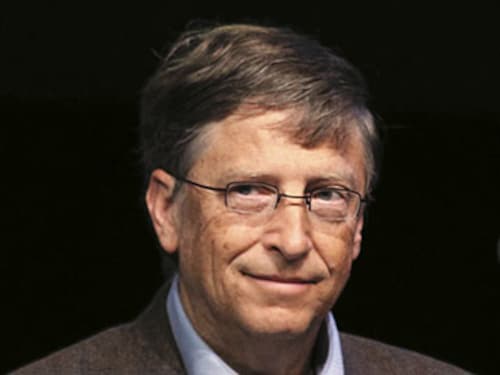The Power of Catalytic Philanthropy
Catalytic philanthropy has the high-stakes feel of the private market but can transcend the key market limitations


I am a true believer in the power of capitalism to improve lives. Where the free market is allowed to operate, it is agile and creative. It can meet demand the world over and plays a central role in increasing living standards.
But when my wife, Melinda, and I made our first trip to Africa in 1993, it was really our first encounter with deep poverty, and it had a profound impact on us. Not long after we returned we read that millions of poor children on that continent were dying every year from diseases that, essentially, nobody dies from in this country: Measles, malaria, hepatitis B, yellow fever. Rotavirus, a disease I had never even heard of, was killing half a million kids each year.
We assumed that if millions of children were dying, there would be a massive worldwide effort to save them. But we were wrong. While the private sector does a phenomenal job meeting human needs among those who can pay, there are billions of people who have no way to express their needs in ways that matter to markets. And so they go without. And while private markets foster many stunning innovations in medicine, science and technology, the private sector still under-invests in innovation—dramatically. There are huge opportunities for innovation that the market ignores because those taking the risk capture only a small subset of the returns.
Innovations for the poor suffer from both of those market limitations. The market is not going to place huge bets on research when there are no buyers for a breakthrough. This explains why we have no vaccine for malaria today, even though a million people die from it every year.
In this gap, government plays an important role. It can offer services where the market does not and thus provide a safety net. To some extent, it also fills in where the market leaves off in funding innovation. But government faces its own obstacles to funding innovation. It generally does not take the long view, because election cycles are short. Government is averse to risk, given the eagerness of political opponents to exploit failures. Unlike the private market, government is good not at seeding numerous innovators but at backing only the ones that make progress.
So when you come to the end of the innovations that business and government are willing to invest in, you still find a vast, unexplored space of innovation where the returns can be fantastic. This space is a fertile area for what I call catalytic philanthropy.
Catalytic philanthropy has the high-stakes feel of the private market but can transcend the key market limitations above: The investor doesn’t need a share of the benefits—those go to poor people or sick people or society generally, all of whom stand to gain earthshaking returns from the kind of innovations that business and government likely won’t pursue unless philanthropy goes first. And once you’ve found a solution that works, catalytic philanthropy can harness political and market forces to get those innovations to the people who need them most.
That has been our foundation’s approach in supporting research, manufacture and delivery of vaccines for childhood diseases. As Melinda and I became more involved, we found that some critically needed vaccines were just sitting on shelves while other vaccines were not being manufactured at all. For the first time in our lives, we were working in a world beyond the reach of market forces.
Philanthropy’s role is to get things started. We used foundation funds to set up a system to make market forces work in favour of the poor, guaranteeing purchases so drug companies could make a little bit of money or at least not lose their shirts. As the value of this approach became clearer, governments put in money to add to the market incentives, and some drug companies began to factor poor-world diseases into their business model. In both research and delivery, well-targeted philanthropic money triggered action from business and government. Since 2000, this catalytic philanthropy partnership has immunised more than 250 million children and prevented more than five million deaths. We may even see a malaria vaccine in 2015.
Melinda and I have the honour and the responsibility to return to society, in the best way we know how, the resources we have received. But you do not need to be the chair of a large foundation to have an impact on the world.
Risk takers need backers. Good ideas need evangelists. Forgotten communities need advocates. And whether your chief resource is volunteer time or hard-earned dollars, for a relatively small investment catalytic philanthropy can make a big impact. For me, it’s proven the best job in the world, as thrilling and humbling as anything I’ve ever done.
First Published: Nov 27, 2012, 06:33
Subscribe Now